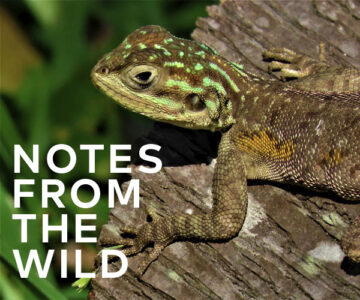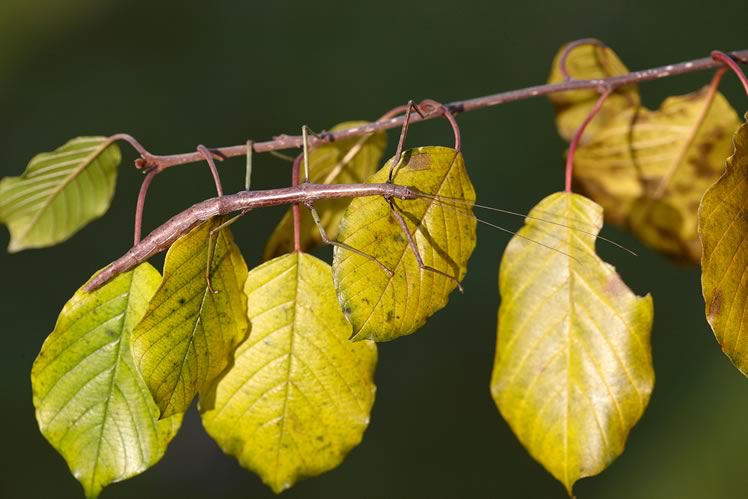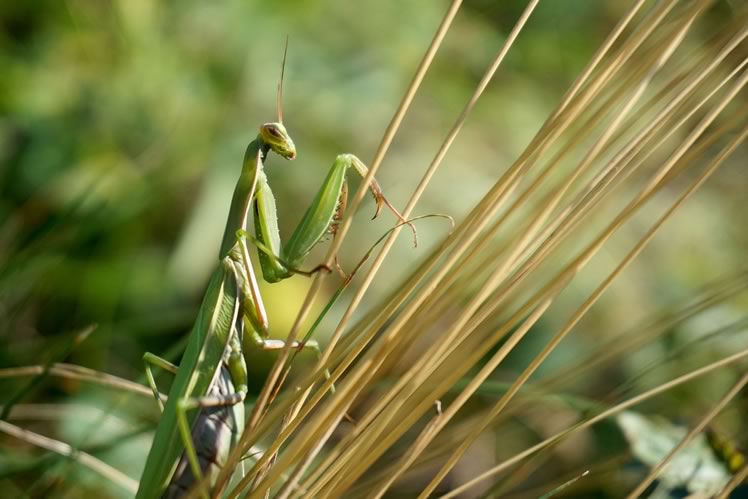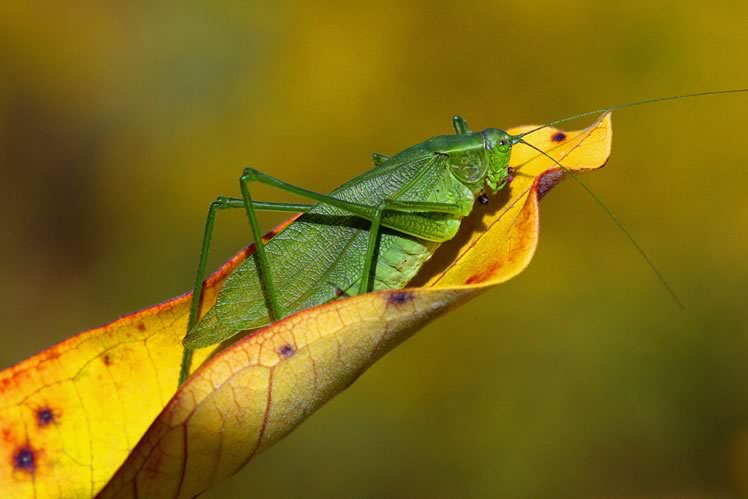Fall’s Best: The Monarch Butterfly, the Porcupine and the Brook Trout
Savour fall with these 10 wonders of autumnal nature – from insects to constellations.
When we try to pick out anything by itself, we find it hitched to everything else in the universe.
—John Muir, American naturalist
Brimming with beauty and abundance, fall is a season of exhilaration for naturalists. Flocks of birds, bolstered by newly fledged young, feast on a cornucopia of seeds, berries and insects. Monarch butterflies dance through the air, pulled by a mysterious force toward distant Mexican mountains. Quicksilver movements in crystalline streams betray the presence of spawning brook trout. Spider webs glisten with dew on cool, sun-kissed mornings.
Every element of this autumnal pageant of life is connected, sometimes directly, as with monarch and milkweed, and sometimes less obviously. Plants, animals and the nonliving environment are interwoven in myriad ways.
The 10 vignettes that follow are a small sampling of the wonders of autumnal nature, and the connections and relationships that support the tapestry of life in our hills and beyond.
Beloved
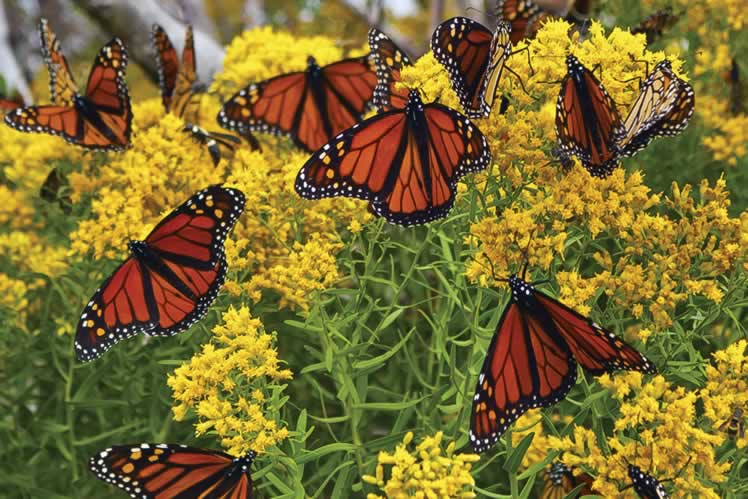
Monarch butterflies on goldenrod. Shutterstock © Lynnya
Monarch butterflies are truly loved, a notable exception to the rule in the much-maligned insect world. Beautiful, buoyant and colourful, these insects touch the human spirit. Their life history, which includes a multigenerational migration to Canada from Mexico every spring and the autumn return journey of 3,000 kilometres to the Trans-Mexican Volcanic Belt, is both improbable and astonishing.
For years the number of beloved monarchs has trended relentlessly downward, and there has been little positive news. But my observations over the past summer have me grasping a faint hope that some recovery may be possible. Several females arrived in my suburban yard to lay eggs on the various species of milkweed I grow. A single anecdotal report is of little value, of course. I await more credible assessments from Monarch Watch and Journey North, organizations dedicated to monarch survival.
The monarch butterflies you see now have put their mating urge on hold until 2018. Their single-minded objective at this time is to conquer the great distance between here and Mexico. That incredible journey through cities, forests, farmland and deserts – buffeted by wind, pummelled by storms and stalled by cold fronts – takes plenty of fuel, and our monarchs top up their tanks by sipping nectar from autumn flowers, such as asters. This is a connection we can strengthen. Growing asters and other nectar-rich autumn flowers in our yards will help monarchs on their way.
Monarchs illustrate beautifully that nature is a web of connections, linking not only plants and animals, but geography as well – in their case Mexico, the United States and Canada.
Prolific
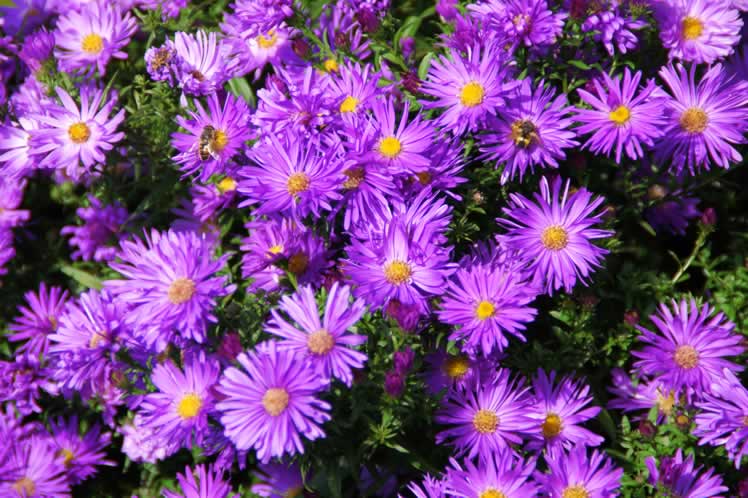
Honeybees feast on New England aster. Photo from Pixabay.
One aster species that monarch butterflies depend on is the New England aster, which paints roadsides and meadows purple in autumn. This purple blends with the whites and yellows of other wildflowers to create a flourish of late-season colour. November’s sombre curtain looms, but in early fall New England asters throw a final exuberant party for bees, wasps and butterflies.
These insects adore asters, filling their winter larders with its copious nectar, fuelling up for flights southward, or simply gorging – last suppers before winter rings their death knell.
I wouldn’t be without New England aster in my yard. It is a rampant grower to be sure, and a self-seeder of wild abandon, but its beauty and its appeal to insects have me hopelessly in thrall. I can sit for hours among asters, surrounded by the hum of a thousand wingbeats, the micro dramas of predator and prey, and the constant comings and goings of a pageant of pollinators.
Bizarre
With some notable exceptions – bees and butterflies among them – the prevailing sentiment toward insects is deep antipathy. This is a matter of particular despair for me. Insects are manifestly interesting, of vital importance to the survival of other life and often fascinatingly bizarre. It is a mark of the artificial world people have created that we fear and dismiss them so blithely.
Autumn is generally the climax of a bug’s life. The season is a time of feeding, mating and egg laying before the big chill. And in fall most of our bugs are at their biggest: praying mantises the size of index fingers, thumb-sized katydids masquerading as leaves, and perhaps most bizarre of all, hand-spanning walking sticks. The name fits. These fabulous insects do, in fact, look for all the world like sticks that walk.
Consider for a moment why this is so. Through deep history, the acute vision of birds has, in effect, fashioned walking sticks into this form. The more these insects resemble unpalatable sticks, the better their odds of survival.
Walking sticks are common, but because we humans are visual creatures like birds, we, too, fall for this insect’s ruse. Finding a walking stick is a challenge, but the search can be an excellent adventure. A close examination of the vines and shrubs along meadow verges may not reveal walking sticks, but it will almost certainly uncover other exciting arthropods such as spiders and caterpillars.
Bejewelled
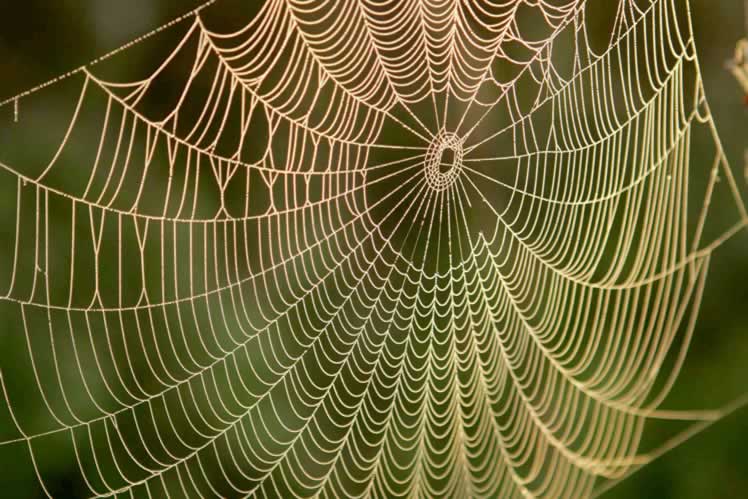
A dewy spiderweb. Photo by Pixabay.
Dew and spiderwebs combine in late summer and early fall to create stunning works of art. At this turning of the year, spiders, like walking sticks and praying mantises, reach their largest dimensions – and create their largest webs.
These webs are nearly invisible much of the time, but in the early morning after a cool night, water droplets display their intricate and beautiful structures. To experience this beauty you need to rise early and ideally find yourself in a meadow by dawn. As the sun rises you’ll have a brief opportunity to admire the webs before the dew evaporates. Spiderwebs shiver in the merest breath of wind, so the stillness and softly golden light that often prevail at dawn offer the best conditions for photography, if that is your inclination. Spectacular images can result.
Aquatic
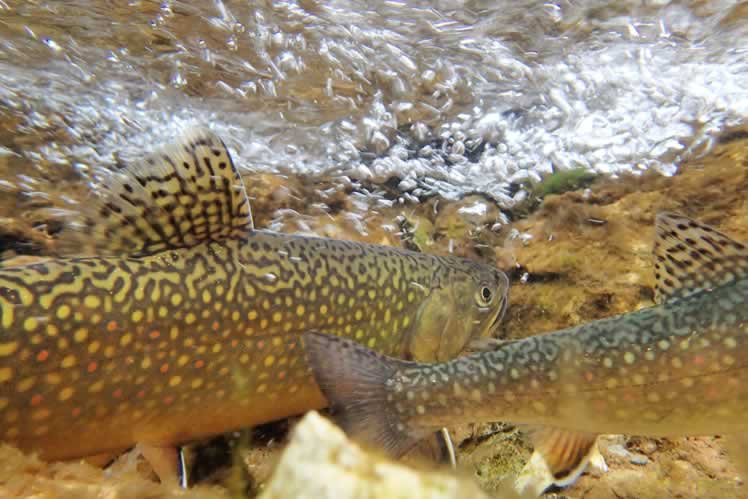
Brook trout. Istockphoto © Mlharing.
The profusion of insects and spiders in our world feeds birds, amphibians, reptiles, mammals and fish. Brook trout are local fish that fatten on this insect bounty. Autumn is mating season for these exquisite fish and though they are beautiful throughout the year, as the days grow shorter, hormonal changes in male brook trout render them stunning.
Now is the time to walk stealthily along one of the coldwater streams of Headwaters and peer intently into the clear water to find breeding trout. Ideal conditions are gravelly beds with an upwelling of cold, oxygen-rich groundwater. Because you’re unlikely to know where these conditions exist, look for patches of clean gravel, where the females have cleared sediment and debris in preparation for laying eggs.
These sites, swept clean by the females who lie on their sides and wave their tails, are called redds. Nearby, you’re likely to see one or more resplendent males eager to mate with the nest-building female. Conflicts often ensue, with males repeatedly pursuing each other. These clashes and the eventual spawning of the female and her successful suitor are fun to watch. A pair of close-focus binoculars is essential.
The once extensive range of brook trout has been greatly circumscribed by development. That much of Headwaters still offers brook trout the cold, clean water essential for their survival is heartening. Their presence in our waters signals ecological health. So beyond the connection these fish have with anglers casting flies into limpid pools and with a smaller cohort of people like me, who seek their beauty and thrill to their behaviour, brook trout are connected to all of us ecologically. Any diminishment in their local populations should be heeded as a warning of environmental degradation.
Amorous
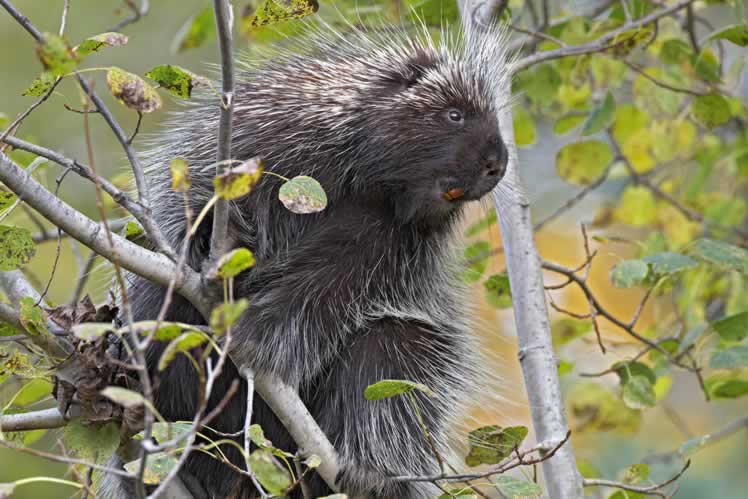
A porcupine. Photo by Robert McCaw.
Brook trout are only one of many animal species that mate in autumn. Nocturnal squeals and screams emanating from the woods in fall broadcast the passion of porcupines. During a fall camping trip years ago, I awoke alarmed and baffled in the wee hours to these sounds. A flashlight beam revealed a porcupine couple on a branch overhead.
These rodents, bristling with needle-sharp quills, are found throughout the hills. Like beavers, porcupines eat the bark and branches of trees for much of the year. Hemlock boughs are favourite winter fodder and hemlock foliage scattered on the ground indicates the presence of porcupines.
While porcupines seek hemlock trees, fishers seek porcupines. The large weasels are now reclaiming our hills after a long period of exile, likely drawn south in part by the abundance of porcupines. Fishers are one of the few predators that successfully hunt the quilled rodents, and this shouldn’t be lamented. Predator-prey relationships keep ecosystems healthy.
Elegant
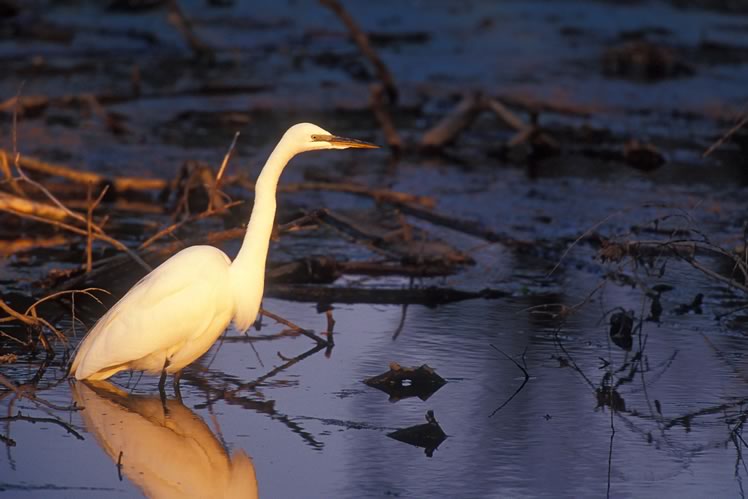
A great egret at sunset. Photo by Robert McCaw.
Great egrets are brilliant, all-white herons that evoke associations with Spanish moss and southern bayous. And yet they have a modest but well-established breeding population in Ontario. In Headwaters, autumn is probably the best time to see these elegant wading birds as they disperse southward from nesting colonies along Georgian Bay. Locally, Luther Marsh is a favourite stopover, as is the Beaver River just north of our region.
Feathers were once de rigueur for women’s hats, and the rapacious hunt to satisfy this fashion trend nearly finished several egret species. The slaughter was a factor in the founding of the U.S. National Audubon Society, which rallied concerned citizens to stop it.
This was one of the first major conservation success stories and stands as a reminder of how connecting to the natural world can result in positive action. We save what we love.
Bountiful
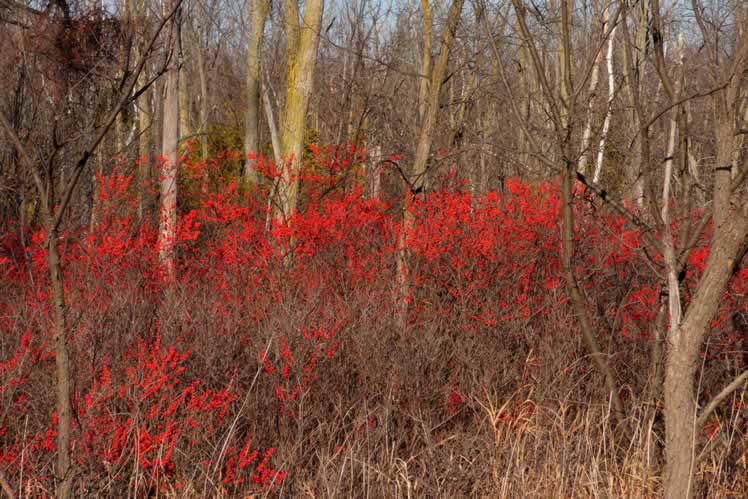
A profusion of winterberry. Photo by Don Scallen.
Along the margins of wetlands where egrets hunt grows a native holly called winterberry. In autumn the branches of female winterberries are laden with dazzling red fruit that beckons passing birds. Robins, waxwings and bluebirds ensure most of the fruit is eaten before the winter solstice. A more appropriate name for this shrub might be “autumn berry.”
The relationship between birds and winterberry is, of course, mutually beneficial. The berries nourish the birds just before the lean winter months. But the seeds in the fruit, packing the DNA to produce more winterberry hollies, move unscathed through the birds’ digestive tracts. Most will be deposited in unfavourable habitats, but a few lucky ones will land in wet soil, and a few of those will eventually produce berries of their own to beckon the birds.
Aloft
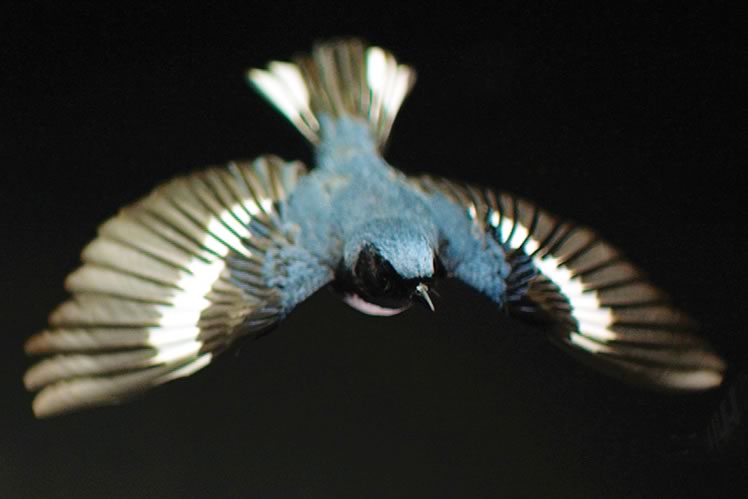
A black-throated blue warbler at night. The Messenger, Courtesy Songbird SOS Productions Inc.
Many of the birds that feast on winterberries use the nutrition to help power their southward flight in the fall. Most of these songbirds migrate at night, and if you are attentive, you can hear them as they pass overhead. As they fly, songbirds, including thrushes, warblers and many others, speak to one another with simple chirps, peeps and whistles. They do this to stay in touch and probably to feel the warmth of companionship we would also seek on a dark and potentially dangerous journey.
These small birds fly at night for various reasons. One is to avoid hawks and falcons, masterful aerial predators that hunt along the migration routes during the day. But another reason is celestial. Many birds read the stars to navigate, especially the North Star, which appears fixed in the night sky.
It is awe-inspiring that the movements of birds can be governed by a point of light 434 light years distant. An otherworldly connection.
Celestial
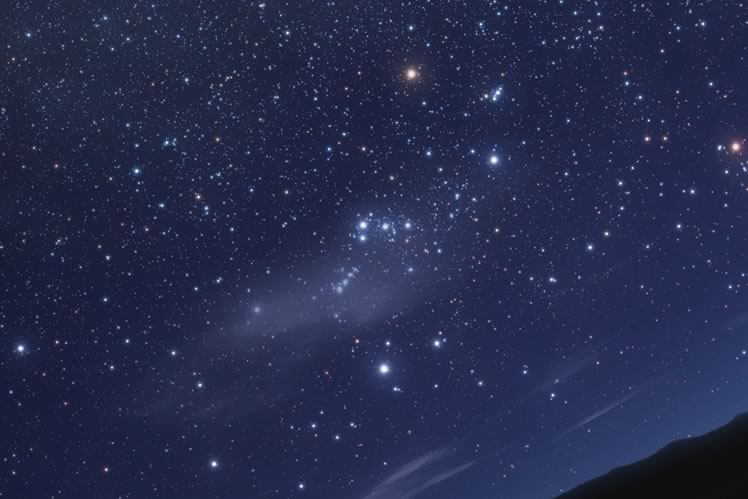
The constellation Orion, including red supergiant Betelgeuse.
Like migrating songbirds, we, too, sometimes cast our glance upwards, and with the night sky still mercifully dark above much of Headwaters, stargazing remains an abiding pleasure.
When we look skyward in autumn, Orion the Hunter, after being hidden below the horizon for most of the summer, rises into view. The earth’s orbit and its 23-degree tilt once again align the northern hemisphere with this distinctive constellation.
Orion is one of the most recognizable constellations. The hunter’s belt and sword and his shoulders and knees are easily visible. The points of light that define these features attract astronomers. The Orion Nebula, a vast stellar nursery where clouds of gas gradually coalesce into stars, is found in Orion’s “sword.”
Rigel, Orion’s “left knee,” is a blue-white super giant star, thousands of times brighter than Earth’s sun. And his “right shoulder” is the well-known Betelgeuse, a red supergiant about 700 times the diameter of the sun. Betelgeuse will someday explode in a tremendous supernova that could rival the brightness of the moon in the night sky.
Massive stars such as Betelgeuse create nearly all the elements required by life. When they explode, they seed the universe with these building blocks, including the carbon that constitutes our bodies and the oxygen we breathe. So it’s fitting as we stare up into the night sky to ponder the stunning reality that birds, asters, brook trout, walking sticks – and you and I – are built of star stuff.
Connectivity is the hallmark of life on Earth, and the ultimate connection is to the cosmos itself.
Related Stories
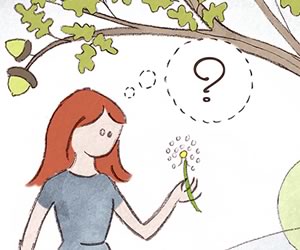
The Language of Nature
Jun 20, 2016 | | EnvironmentWithout words, are we lost in the woods? How words connect us to nature.
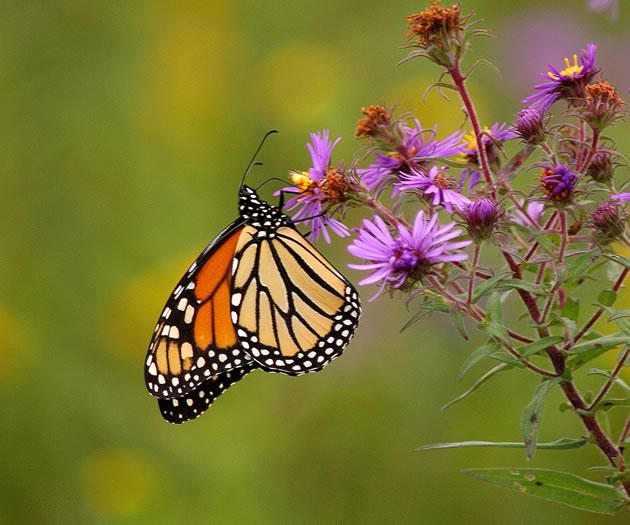
In Defence of Meadows
Sep 16, 2016 | | EnvironmentToo often belittled as “idle” land awaiting development – or “rescued” by reforestation – meadows deserve the same protection and respect as our woodlands and wetlands.

Backyard Birding 127… 128… 129… and Counting
Jun 17, 2013 | | LeisureBirdwatchers like me are notoriously nerdy, and the essence of this is a fascination with lists.
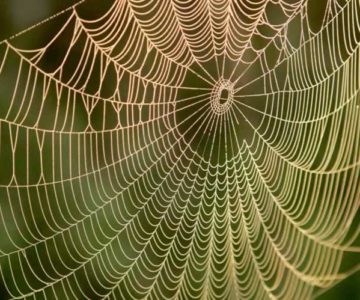
Web Masters
Jun 21, 2007 | | Back Issues“What would you rather have, spiders sitting in webs where you can see them, or bugs wandering around undetected?” asks Tom Mason.
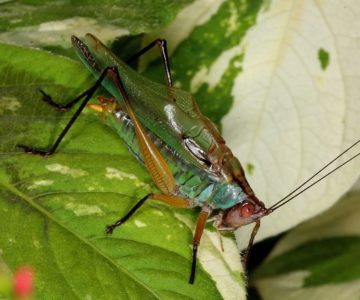
Katydids
Sep 5, 2017 | | Notes from the WildKatydids are seldom seen, because they camouflage so well with greenery.
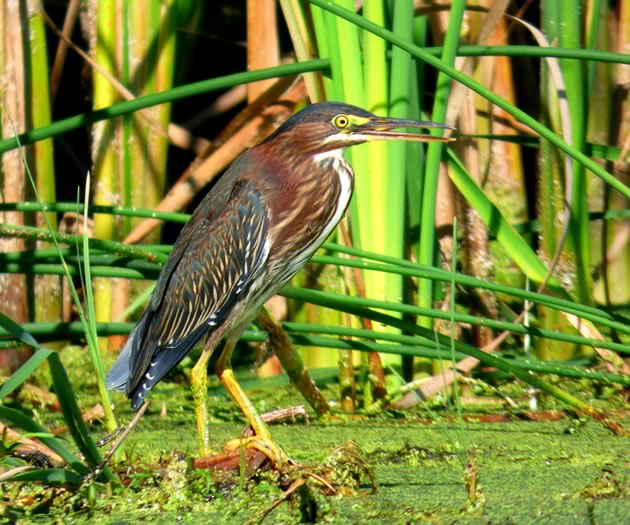
Herons and Egrets
Sep 27, 2016 | | Notes from the WildHerons, egrets and bitterns are long-legged freshwater and coastal birds in the family Ardeidae.
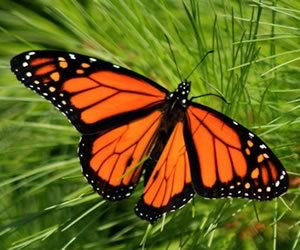
Monarchs: Children of the Sun
Aug 30, 2010 | | Notes from the WildMonarchs are children of the sun. The boldness of Sol this summer has energized their life cycle.
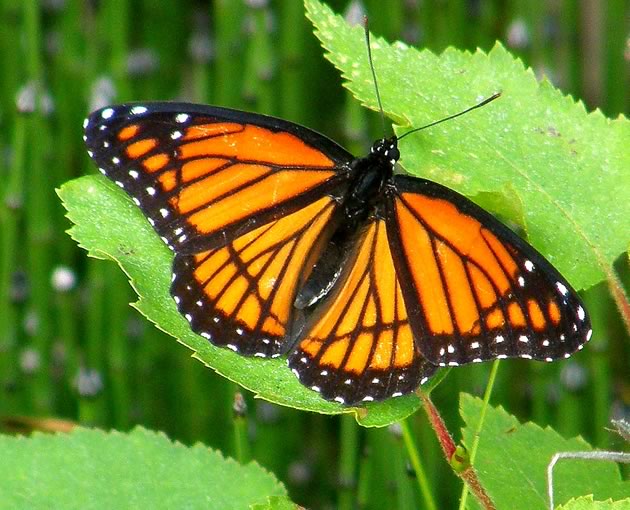
Mimicry
Oct 15, 2012 | | Notes from the WildLike everything in nature, mimicry is complex and nuanced.
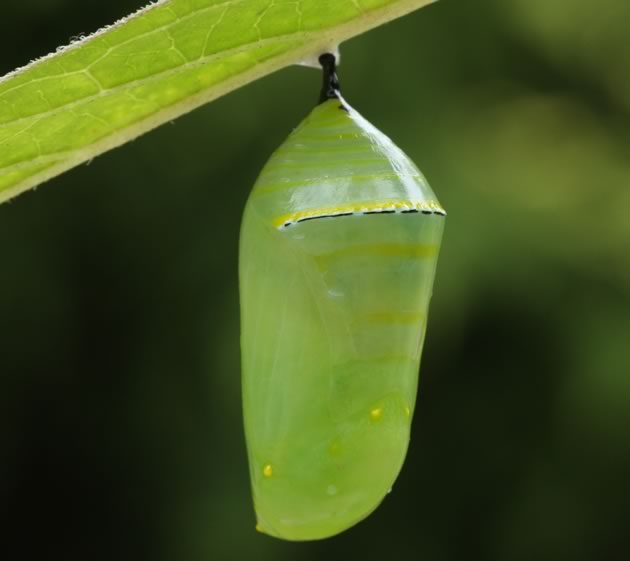
Monarch Butterfly – RIP 2026
Aug 9, 2013 | | BlogsMost of us are old enough to remember when monarchs were a frequent sight in meadows and gardens.
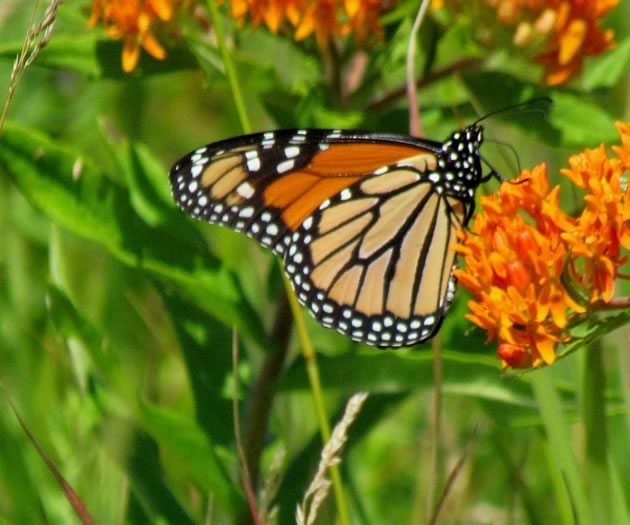
Milkweed and Monarchs
Jul 25, 2014 | | Notes from the WildThe monarchs’ table was set, but alas, they wouldn’t come to dinner.
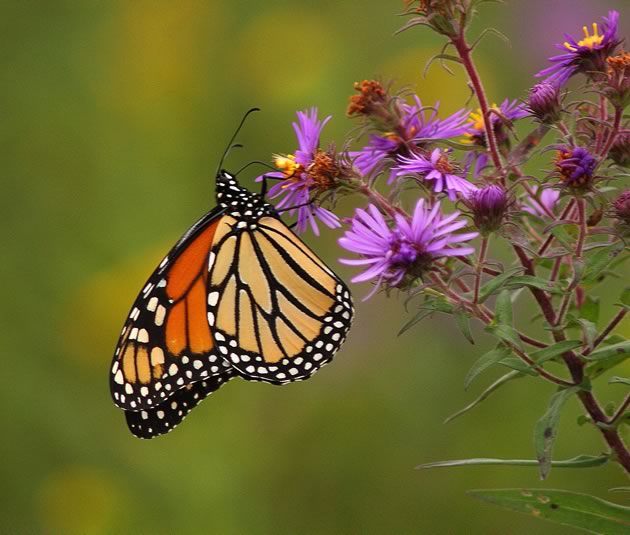
Goldenrod and Asters
Oct 12, 2015 | | Notes from the WildAsters and goldenrods are tremendously important wildlife plants.


